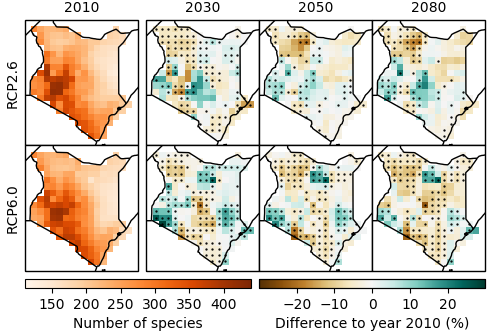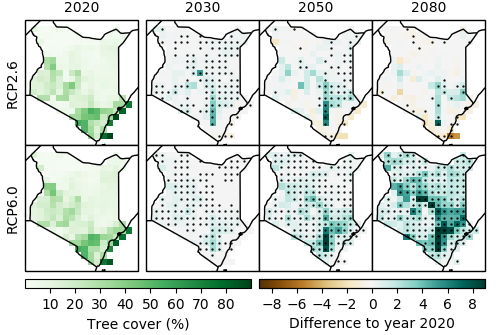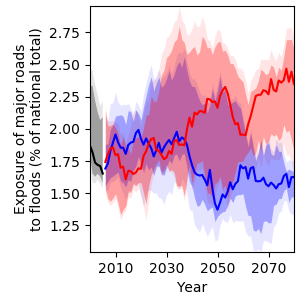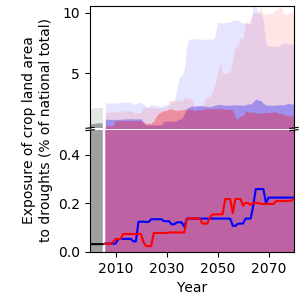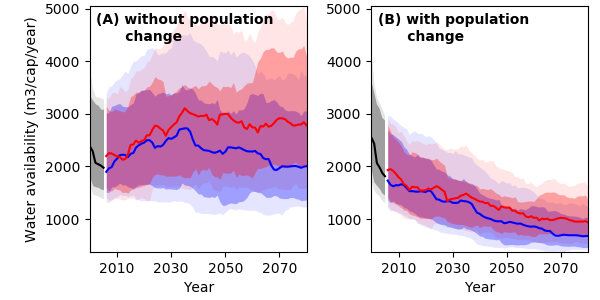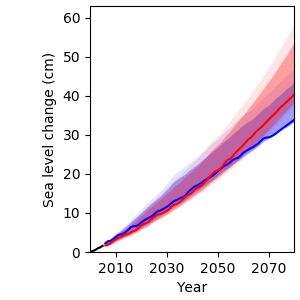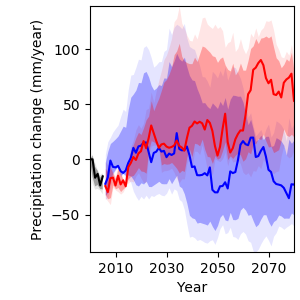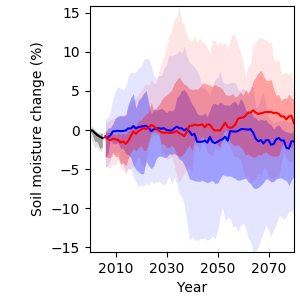Climate change threatens the health and sanitation sector through more frequent incidences of floods, heatwaves, droughts and storms [30]. Among the key health challenges in Kenya are morbidity and mortality through HIV / AIDS, respiratory diseases, vector-borne diseases such as malaria and impacts of extreme weather events (e.g. flooding), including injury and mortality as well as related waterborne diseases such as diarrhoea and cholera [31]. Many of these health challenges are expected to become more severe under climate change. Climate change is also likely to impact food and water supply, thereby increasing the risk of malnutrition, hunger and death by famine. Studies found a strong link between precipitation levels and child stunting, which serves as a common indicator of malnutrition: Precipitation levels impact food production, which in turn impacts food availability and ultimately growth, particularly during infancy [32]. Furthermore, the WHO estimates that 70 % of the population in Kenya is at risk of contracting malaria [33]. Climate change is likely to lengthen transmission periods and alter the geographic range of vectorborne diseases, for instance, due to rising temperatures. In this way, malaria could expand from lowland to highland areas, parts of which have been malaria free so far [34].
Exposure to heatwaves
Rising temperatures will result in more frequent heatwaves in Kenya, which will increase heat-related mortality. Under RCP6.0, the population affected by at least one heatwave per year is projected to increase from 0.6 % in 2000 to 6.0 % in 2080 (Figure 18).

Heat-related mortality
Furthermore, under RCP6.0, heat-related mortality will likely increase from 1.4 to 6.8 deaths per 100 000 people per year, which translates to an increase by a factor of five towards the end of the century compared to year 2000 levels, provided that no adaptation to hotter conditions will take place (Figure 19). Under RCP2.6, heat-related mortality is projected to increase to 3.0 deaths per 100 000 people per year in 2080.

References
[30] B. Simane, H. Beyene, W. Deressa, A. Kumie, K. Berhane, and J. Samet, “Review of Climate Change and Health in Ethiopia: Status and Gap Analysis,” Ethiop. J. Heal. Dev., vol. 30, no. 1, pp. 28–41, 2016.
[31] Centers for Disease Control and Prevention (CDC), “CDC in Kenya,” Atlanta, Georgia, 2016.
[32] K. Grace, F. Davenport, C. Funk, and A. M. Lerner, “Child Malnutrition and Climate in Sub-Saharan Africa: An Analysis of Recent Trends in Kenya,” Appl. Geogr., vol. 35, no. 1–2, pp. 405–413, 2012.
[33] WHO, “In Kenya, the Path to Elimination of Malaria Is Lined With Good Preventions,” 2017. Online available: https://www.who.int/news-room/feature-stories/detail/in-kenya-the-path-to-elimination-ofmalaria-is-lined-with-good-preventions [Accessed: 18-Nov-2019].
[34] USAID, “U.S. President’s Malaria Initiative: Kenya – Malaria Operational Plan FY 2019,” Washington, D.C., 2019.



